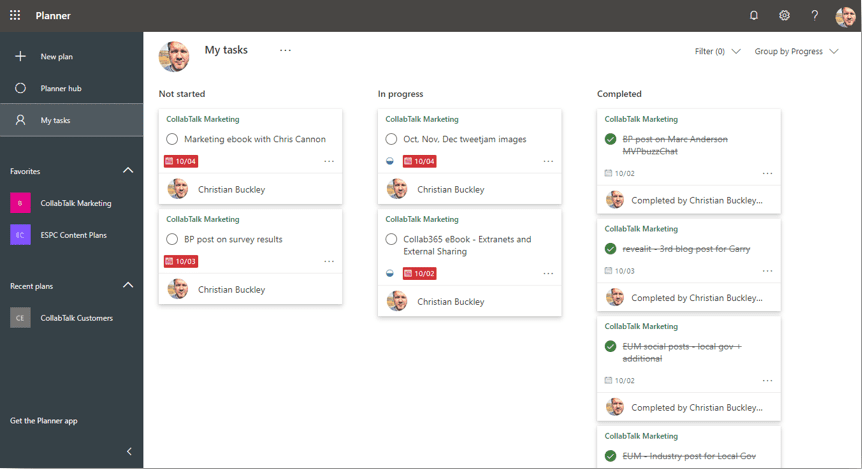

#Microsoft tasks by planner and to do full#
But our main focus is working within a plan like the one below.Įach task in Planner is full of optional details, as you can see above.

We’ll touch on other Planner views, like Charts, in this blog too. Depending on the task details you add, Planner does some really cool stuff-stuff that all Planner beginners should know about. Selecting a card brings up a more detailed view of that task, shown on the right. The one on the left shows a typical Planner plan in the Board view, where each task is represented as a card and organized into columns, or Buckets. If you’re new to Planner, study the screenshots below for a minute. To kick off 2022, we’ve pulled together some helpful Microsoft Planner tips for beginners. When there is a new comment added to a task, a little chat bubble will appear on the task card and you can click into the task to see the comment.A new year is the perfect time to try new things: new hobbies, new foods, and, if 2021 felt like a disorganized blur, a new way to manage your tasks.

Notes: This section allows you to include notes that might be relevant to the task.Start Date/ Due Date: Options for setting start and due dates allows you keep track of when certain tasks are due and helps create a plan for when to work on specific projects.Using priority labels for your tasks can help you and your team determine what work needs their attention first, while still keeping lower priority tasks on their radar. Priority: You have four different priority options: low, medium, important, and urgent.When working collaboratively, these progress options can easily be used to communicate the status of tasks. Progress: You have three different progress options: not started, in progress, and completed.Bucket: If you’ve organized your tasks into buckets, like demonstrated above, you can select what bucket to put your new task in.You can label them by color, which is the default setting however, you can provide these colors with specific names (e.g., “pink” can be changed to “training”) Add label: The ability to add a label can help you organize your tasks.When you “assign” a task to someone, they receive an email letting them a new task has been assigned to them, along with any due dates, notes, or attachments that may be included. Assign: With the “assign” button, you can designate tasks to others on your team.


 0 kommentar(er)
0 kommentar(er)
